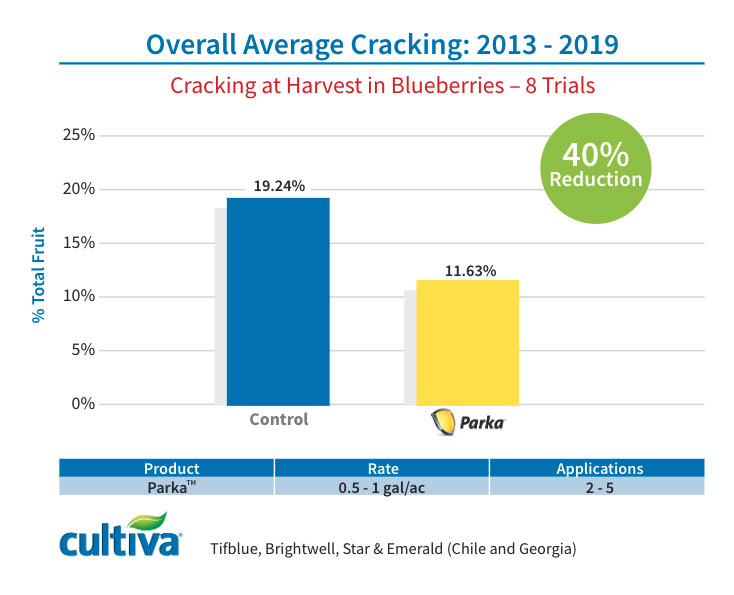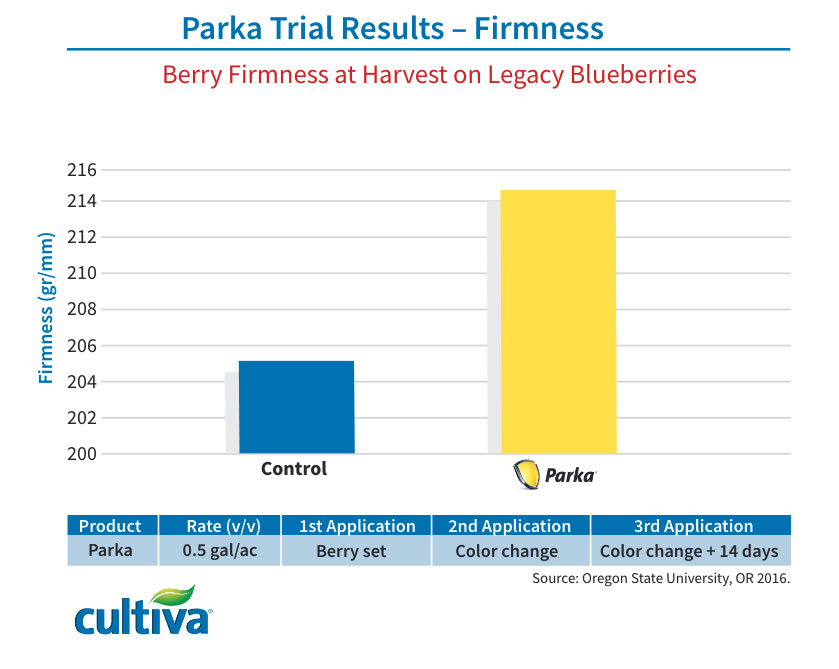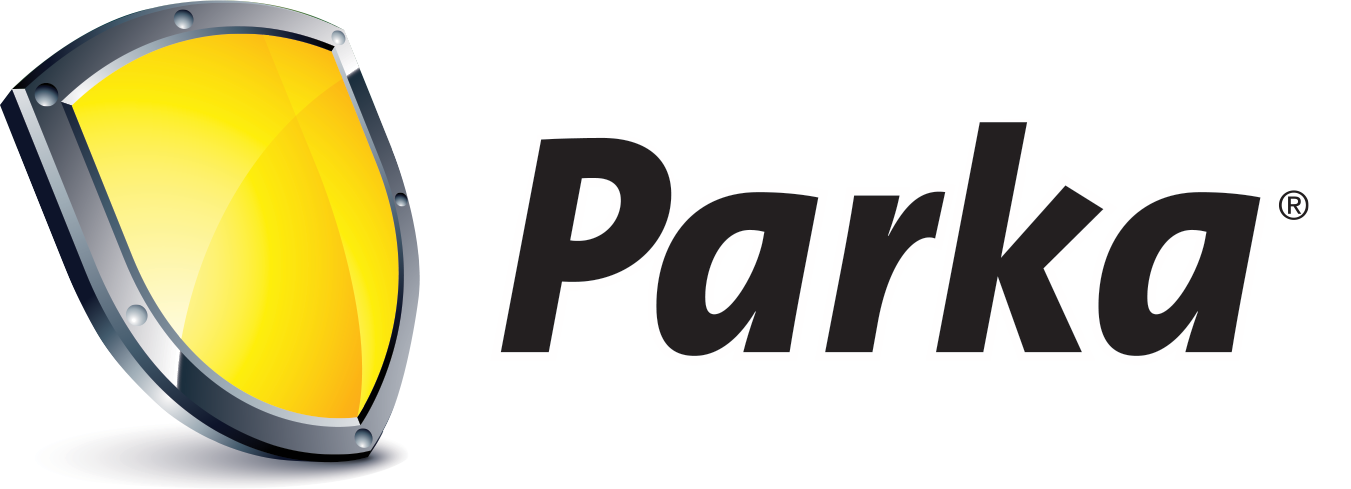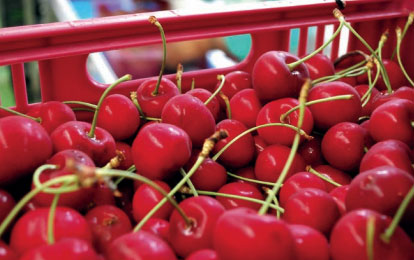Supplementing the Cuticle Reduces Cracking and Increases Fruit Firmness
Splitting and cracking of fruit in blueberries is a significant problem for growers and can result in losses of hundreds of dollars per acre. Because Parka supplements and stabilizes the cuticle of the fruit, it is less susceptible to cracking. Parka also provides the physical protection of a clear, hydrophobic and elastic lipid bi-layer that reduces the amount of water entering the ripening blueberries during a rain event. This layer also reduces water loss from within the fruit during periods of high temperatures. This is especially beneficial for blueberries, because it prevents the fruit from softening in hot or dry conditions. These benefits of a Parka application – less cracking and increased firmness of fruit results in more marketable blueberries with a longer shelf life.

Why use Parka on Blueberries?
- Reduces the amount of splitting on ripening blueberries.
- Reduces transpirational water loss during hot temperatures, retaining fruit firmness and increasing shelf life.
- Easily tank mixed with foliar nutritionals and pesticides.
- Does not leave residue or affect bloom on the fruit.
- Exempt from maximum residue levels.
- Zero preharvest interval, zero worker reentry interval.
How to Use Parka in a Program
Splitting occurs close to harvest in blueberries, so Parka should be applied at the first color break, or approximately two weeks prior to the first harvest. Applications should be continued every 10 to 14 days throughout the season until the final pick. Since Parka can be tank mixed with many crop protection and nutritional products, it is easy to include it with those applications.
Application at these regular intervals maximizes fruit integrity. Additional applications are suggested in the presence of high heat and prior to rainfall events.
FAQ
What Causes Splitting of Blueberries?
Research shows a correlation between rain-related splitting and fruit firmness. In general, with just a few exceptions, varieties with firmer fruit exhibit more splitting. Some blueberry cultivars are more susceptible than others, so careful variety selection is important. While the exact mechanism of splitting in blueberries has not been conclusively determined, extensive research has been done on cherry cracking. In cherries, splitting tendencies correlate to sugar content, fruit cuticle elasticity, amount of rainfall, water absorption by the fruit externally and from the roots, duration of water remaining on the fruit, and the water temperature. It is likely that some or all of these factors are the cause of blueberry splitting.
How Does Parka Reduce Splitting?
Research shows that Parka can reduce splitting by up to 40% overall. Parka significantly reduces cracking in other crops by filling in microfractures in the cuticle that develop as the fruit grows. This may be the mechanism in blueberries as well. Parka supplements the cuticle itself and adds elasticity to it, as well as repelling moisture from the fruit surface and increasing cell membrane stability.
What Causes Softening of Blueberries?
Blueberries are easily bruised, and their thin skin makes them vulnerable to many external stresses. Any damage to the cuticle, whether from insects, disease, or harvest processes can result in softening. Moisture loss is also a major factor in preharvest and postharvest softening. Hot temperatures and dry conditions in the field while the fruit is ripening causes higher transpiration rates and increased loss of moisture from the fruit.

How Does Parka Reduce Softening?
Parka’s unique technology allows the exchange of oxygen and carbon dioxide through the fruit cuticle while also reducing water loss from evaporation. It supplements and stabilizes the fruit cuticle while also coating it with the physical protection of a clear, hydrophobic and elastic lipid bi-layer that decreases transpirational water loss from wind and heat.
What Do Growers Like About Parka?
Growers like Parka because it works. It is grower-friendly in other significant ways, as well, particularly its flexibility in tank mixing. Parka can be tank mixed with a wide variety of foliar inputs, including both fertilizers and pesticides. This saves the fuel and labor costs of making an additional pass in the field. Parka does not affect the appearance of blueberries or the healthy bloom that covers the fruit. Field workers crews like Parka, because it does not have the residue that can be an irritant while pruning.



